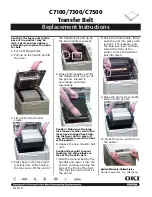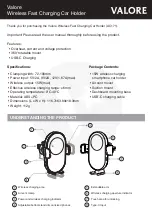
14
15
SERVICE HOURS:
Tracking battery age and charge cycles, Rolls Locomotive Smart
Battery Monitor features a visual LED & audible alarm to identify batteries in service
which have reached their specified or expected end-of-life period. This audio/visual
indicator helps to ensure timely battery replacement and safeguard against unexpected
fail-to-start events.
LOW STARTING PERFORMANCE:
Rolls Locomotive Smart Battery Monitor continually
monitors battery starting capability. Using a rising audible alert & LED, the monitor
notifies operators of below specification starting performance due to increased
battery impedance, suggesting a restorative maintenance charge & testing should be
completed.
OVER DISCHARGE ALERT:
Unintentional deep discharges reduce battery life and
create fail-to-start conditions. Ensuring adequate charging and avoiding heavy
discharge will maintain battery capacity and cranking performance. Using a combined
LED indicator and continuous audible alarm, Rolls Locomotive Smart Battery Monitor
alerts operators during incidents of abnormally low discharge which may lead to a fail-
to-start event, suggesting a restorative maintenance charge & testing be performed
before use.
SULFATION
When a battery is being discharged the lead active material on the plates will react
with the sulfate from the electrolyte forming a lead sulfate on the plates. When there is
no lead active material and or sulfate from the electrolyte remaining the battery then is
completely discharged. After a battery reaches this state, it must be recharged. During
recharge, the lead sulfate is reconverted into lead active material and the sulfate
returned to the electrolyte.
When the sulfate is removed from the electrolyte the specific gravity is reduced and the
reverse takes place when the sulfate is returned to the electrolyte. The most accurate
measure of state-of-charge for flooded lead-acid battery cells is a specific gravity test
using a hydrometer or refractometer.
If a battery is left in a discharged condition the lead sulfate will harden and have a high
electrical resistance. This is what is normally called a sulfated battery. The lead sulfate
may become so hard that normal recharging will not break it down. Most charging
sources, engine alternators and battery chargers, are voltage regulated. Their charging
current is controlled by the battery’s state of charge. During charging, battery voltage
rises until it meets the charger’s regulated voltage, lowering the current output along
the way.
Summary of Contents for 16 CH 25P
Page 2: ...RAILROAD DIESEL STARTER ...
Page 27: ...25 ...












































